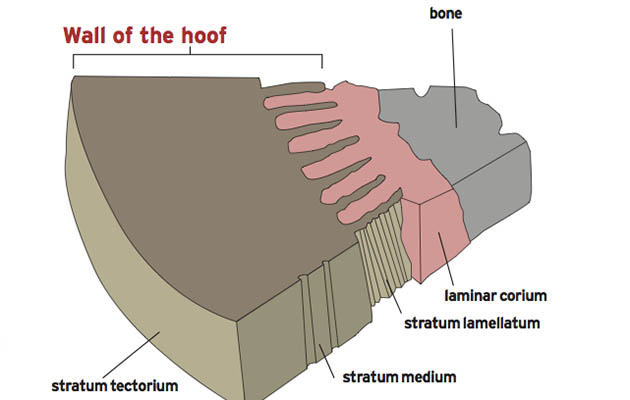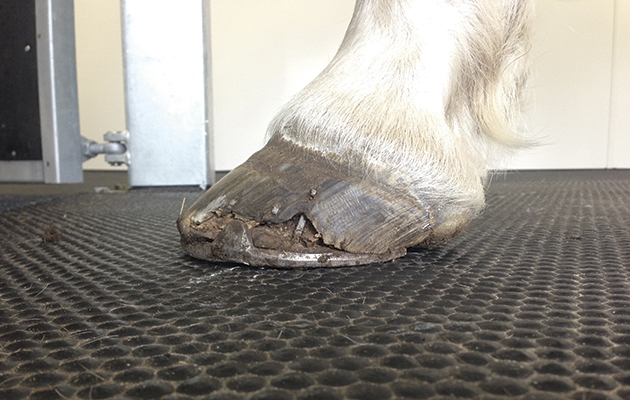Breeders and potential purchasers of Connemara ponies are being urged to take advantage of a test now available to identify animals that carry a mutated gene responsible for a distressing hoof disease.
Hoof Wall Separation Disease (HWSD) is an inherited condition typified by the dorsal hoof wall splitting away from underlying structures. Affecting both males and females, this defect develops in foals of between one and six months of age — although some cases are not detected until much later in life.
The condition can result in the afflicted pony having to support his weight on the sole of his hooves instead of the dorsal hoof wall. Affected animals can experience severe discomfort despite careful management; their quality of life can diminish and euthanasia may be necessary. Even if the condition is initially controllable, ponies may still develop laminitis over time.
Chronic pain
HWSD affects all four feet, usually equally. It appears that there is an absence in the hooves of lipids, a type of fat that is normally present and is thought to provide protection to the hoof structure by repelling excess moisture.
Problems usually become apparent when properly fitted shoes are easily pulled off, along with large chunks of hoof wall.
Farriers and vets may be unfamiliar with the condition, which is frequently misdiagnosed as white line disease. Careful inspection, however, reveals that separation is not within the white line but within the horny substance of the hoof wall itself (the “stratum medium” or “tubular horn”; see diagram).

Early recognition and differentiation is vital, to ensure correct management. Treating the condition as white line disease will not work.
HWSD is not a bacterial or fungal disease, and currently only palliative care is possible. Management involves judicious debridement (removal) of damaged and separated hoof wall, followed by reconstruction with a synthetic material.
One feature of HWSD is that glues and hoof repair and/or extension materials do not “stick” to the remaining hoof as well as might usually be expected. Nevertheless, glue-on shoes are probably the best option. Nailing in tends to be unsatisfactory and these are definitely not cases on which barefoot trimming should be attempted.
Silent carriers
Current thinking is that HWSD is a congenital genetic problem. Because the gene causing the disease is recessive, horses can be “carriers” while remaining unaffected themselves — a pony needs to inherit one copy of the HWSD gene from each of his parents before he will show signs of the disease.
If both parents are not affected but carry the recessive gene, any offspring have a one in four chance of having overt HWSD. Two in four will carry the recessive gene but will have no outward signs, while one in four will be normal and will not carry the gene.
Cases have been reported in several countries, including the UK, Ireland, Sweden, New Zealand and the USA.
Surveys in the USA have demonstrated that about 14% of Connemaras carry the HWSD gene.
Breeders in the UK are starting to have their breeding stock tested. Of 53 British Connemara ponies tested recently, seven were carriers of the gene and only one was affected with HWSD.
Until recently the only laboratory testing DNA for HWSD was the Veterinary Genetics Laboratory at UC Davis University in the US.
The good news is that the British Connemara Pony Society has now arranged for the Weatherbys DNA Laboratory in Ireland to test for the disease at a cost of €30, or £22 (visit www.weatherbys.co.uk).
Testing is non-invasive, involving sampling of mane hair.
Ref: Horse & Hound; 21 January 2016

